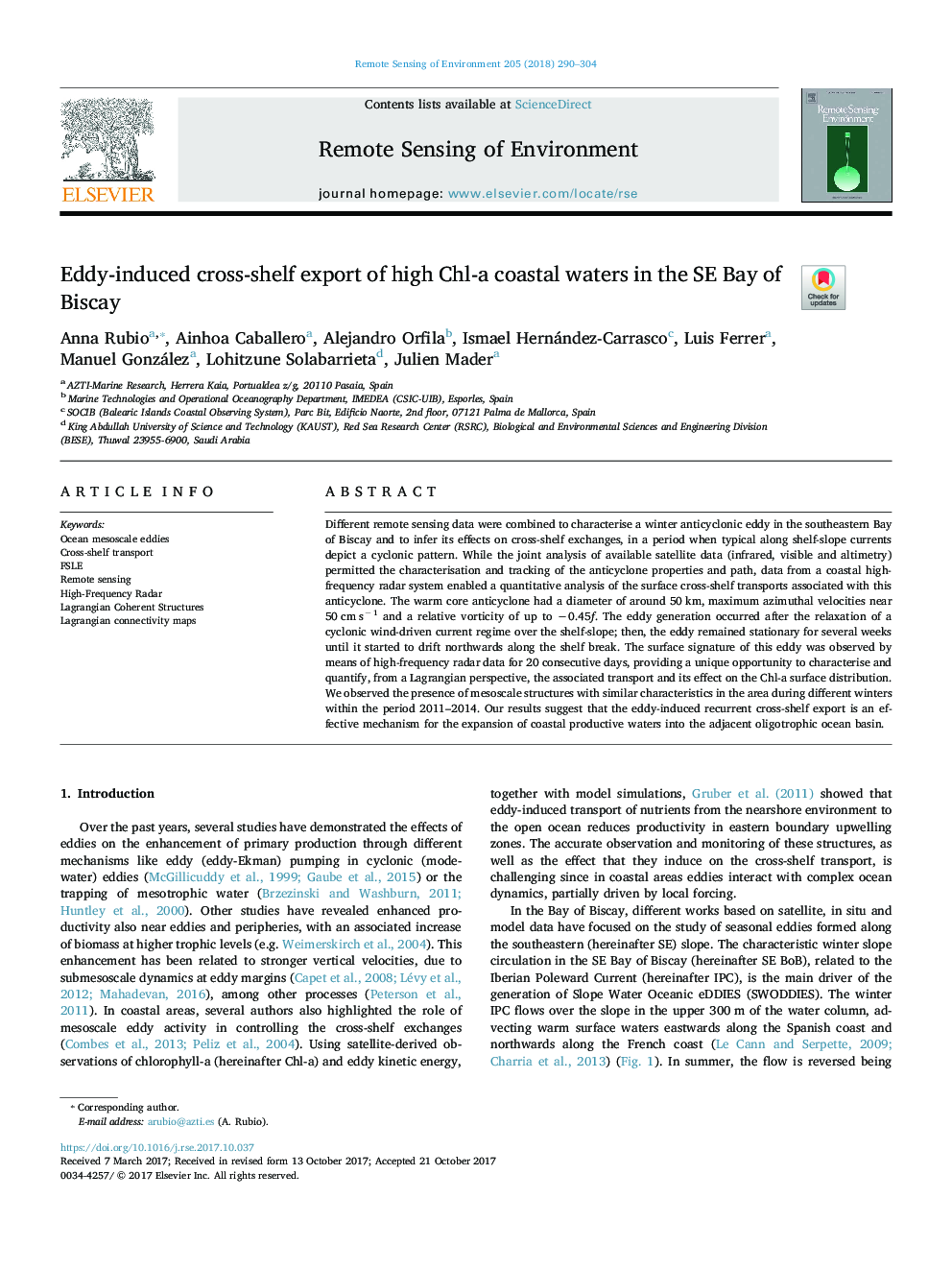| Article ID | Journal | Published Year | Pages | File Type |
|---|---|---|---|---|
| 8866790 | Remote Sensing of Environment | 2018 | 15 Pages |
Abstract
Different remote sensing data were combined to characterise a winter anticyclonic eddy in the southeastern Bay of Biscay and to infer its effects on cross-shelf exchanges, in a period when typical along shelf-slope currents depict a cyclonic pattern. While the joint analysis of available satellite data (infrared, visible and altimetry) permitted the characterisation and tracking of the anticyclone properties and path, data from a coastal high-frequency radar system enabled a quantitative analysis of the surface cross-shelf transports associated with this anticyclone. The warm core anticyclone had a diameter of around 50 km, maximum azimuthal velocities near 50 cm sâ 1 and a relative vorticity of up to â0.45f. The eddy generation occurred after the relaxation of a cyclonic wind-driven current regime over the shelf-slope; then, the eddy remained stationary for several weeks until it started to drift northwards along the shelf break. The surface signature of this eddy was observed by means of high-frequency radar data for 20 consecutive days, providing a unique opportunity to characterise and quantify, from a Lagrangian perspective, the associated transport and its effect on the Chl-a surface distribution. We observed the presence of mesoscale structures with similar characteristics in the area during different winters within the period 2011-2014. Our results suggest that the eddy-induced recurrent cross-shelf export is an effective mechanism for the expansion of coastal productive waters into the adjacent oligotrophic ocean basin.
Related Topics
Physical Sciences and Engineering
Earth and Planetary Sciences
Computers in Earth Sciences
Authors
Anna Rubio, Ainhoa Caballero, Alejandro Orfila, Ismael Hernández-Carrasco, Luis Ferrer, Manuel González, Lohitzune Solabarrieta, Julien Mader,
